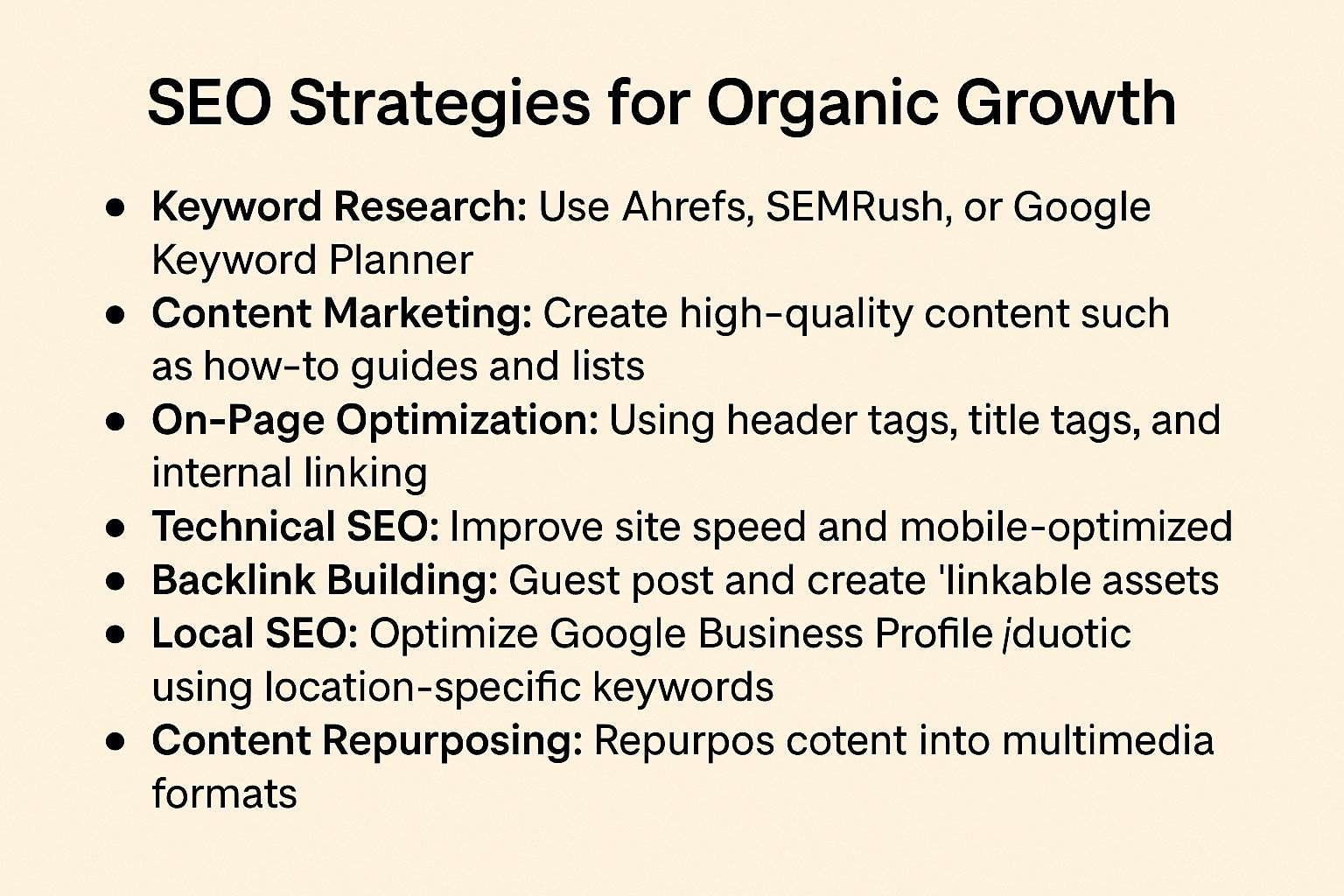The Power of Organic Growth: How SEO Drives Sustainable Business Success
In today’s digital economy, growth is the name of the game. But not all growth is created equal. While paid campaigns can offer quick wins, true, long-term success comes from sustainable, organic growth—the kind that continues to pay dividends long after the ads stop running.
At the heart of organic growth lies Search Engine Optimization (SEO). SEO not only increases your visibility but also builds trust, enhances credibility, and drives consistent, high-quality traffic to your business.
In this blog, we’ll explore what organic growth really means, how brands have achieved it, and how you can leverage SEO strategies to power your business—without burning through a marketing budget.

What Is Organic Growth?
Organic growth refers to the increase in revenue, traffic, or user base that occurs naturally, without relying on paid advertising. It’s fueled by content, community, SEO, word-of-mouth, and user experience.
Unlike paid growth (ads, sponsorships, influencer shoutouts), organic growth builds a foundation that compounds over time. You attract users because they find you helpful, relevant, or interesting—not because you paid to be noticed.
The Data Behind Organic Growth & SEO
Let’s break down some stats to understand why SEO and organic growth go hand in hand:
- 68% of online experiences begin with a search engine (BrightEdge)
- 53.3% of all website traffic comes from organic search (BrightEdge)
- SEO leads have a 14.6% close rate, compared to 1.7% for outbound marketing (HubSpot)
- Companies that blog get 97% more inbound links and 434% more indexed pages (Tech Client)
SEO is not just about traffic—it’s about qualified traffic. Visitors from search are often actively looking for something—answers, products, services—making them much more likely to convert.
Brands That Nailed Organic Growth
Glossier
Glossier built a billion-dollar beauty empire by listening to customers and using organic content. Their blog, “Into the Gloss,” attracted millions of monthly readers before the brand even launched a product.
Headspace
Before investing in ads, Headspace grew through SEO-rich blog content and guided meditation resources that ranked for keywords like “how to meditate” and “meditation for sleep.”
Zapier
Zapier gets over 1 million visits per month via organic search. Their SEO strategy? Creating integration-specific landing pages (e.g., “Slack to Google Sheets”) that dominate long-tail search queries.
Chewy
The pet supply brand gained dominance by publishing keyword-targeted blogs and guides—e.g., “best food for senior dogs”—that aligned perfectly with their eCommerce offerings.
How SEO Fuels Organic Growth
SEO is the bridge between what people are searching for and what your brand offers. Here’s how SEO contributes to growth:
- Increases Visibility: SEO puts your content in front of people when they’re searching for solutions.
- Builds Authority: Top-ranking content builds trust and positions your brand as an expert.
- Generates Evergreen Traffic: Unlike ads that disappear when you stop paying, SEO content continues to bring traffic for months or even years.
- Improves User Experience: Google rewards fast, mobile-friendly, well-structured websites, which in turn increases user retention and conversion.
SEO Strategies to Drive Organic Growth
Here are the most effective strategies to build sustainable, SEO-powered growth:

1. Keyword Research
- Use tools like Ahrefs, SEMRush, or Google Keyword Planner to find keywords your audience is searching for.
- Focus on a mix of high-volume and long-tail keywords (e.g., “how to create a sales funnel for SaaS”).
2. Content Marketing
- Create high-quality, keyword-optimized blog content.
- Use formats like how-to guides, listicles, tutorials, and product comparisons.
- Consistency is key—aim for 2–4 posts per month minimum.
3. On-Page Optimization
- Use proper header tags (H1, H2, H3), optimize title tags and meta descriptions.
- Ensure internal linking between related posts.
- Include visuals, alt tags, and mobile-friendly layouts.
4. Technical SEO
- Improve site speed using tools like Google PageSpeed Insights.
- Ensure your site is mobile-optimized and crawlable.
- Set up an XML sitemap and fix broken links.
5. Backlink Building
- Guest post on relevant industry blogs.
- Use HARO (Help A Reporter Out) to get cited in the media.
- Create “linkable assets” like original research or industry stats.
6. Local SEO
- If you’re a local business, optimize your Google Business Profile.
- Get listed on directories (Yelp, TripAdvisor, JustDial).
- Use location-specific keywords: “best hair salon in Bangalore.”
7. Content Repurposing
- Turn blogs into YouTube videos, carousel posts, or podcasts.
- Republish on platforms like LinkedIn, Medium, and Quora.
How to Implement These Strategies
Here’s a simple roadmap:
- Step 1: Identify your target audience and their pain points.
- Step 2: Research keywords they’re searching for.
- Step 3: Build a content calendar around those topics.
- Step 4: Publish optimized content and share across channels.
- Step 5: Monitor using tools like Google Analytics and Google Search Console.
- Step 6: Adjust your strategy monthly based on rankings, bounce rate, and traffic quality.
Metrics That Matter
Track these KPIs to measure organic growth success:
- Organic Traffic
- Keyword Rankings
- Bounce Rate
- Time on Page
- Pages Per Session
- Conversion Rate from Organic Visitors
Why Organic Growth Is Worth the Patience
Sure, SEO takes time. It’s not a “get-rich-quick” plan—it’s a build-wealth-slowly-but-surely strategy.
But that’s what makes it valuable.
Organic growth compounds. It doesn’t depend on ad spend. And it builds something far more enduring than clicks: loyalty and trust.
A single high-ranking blog post can generate traffic and leads for years. SEO investments can yield 1,000%+ ROI over time if done right.

Final Tips for Success
- Don’t write for Google—write for humans and optimize for Google.
- Focus on content quality, not just quantity.
- Regularly update old content to keep it fresh.
- Stay up-to-date with Google algorithm changes.
- Be patient. Organic growth is a marathon, not a sprint.
Final Thoughts
Organic growth is about building something meaningful. With a smart SEO strategy, brands can turn every blog, page, and piece of content into a long-term growth asset.
Whether you’re a startup looking to save on ads or an established brand aiming for sustainable traffic, SEO is your best friend.
Because once you rank, you bank.
Contact Us
Have questions or need assistance? Contact us at QuickBuzz! We’re here to help you grow.